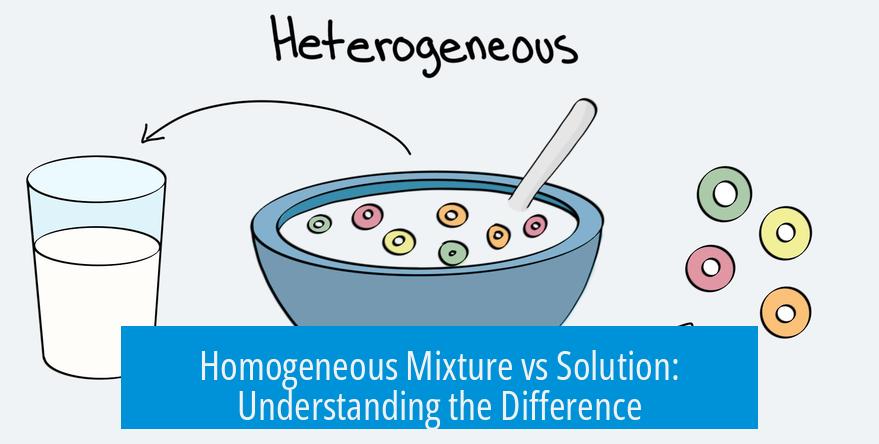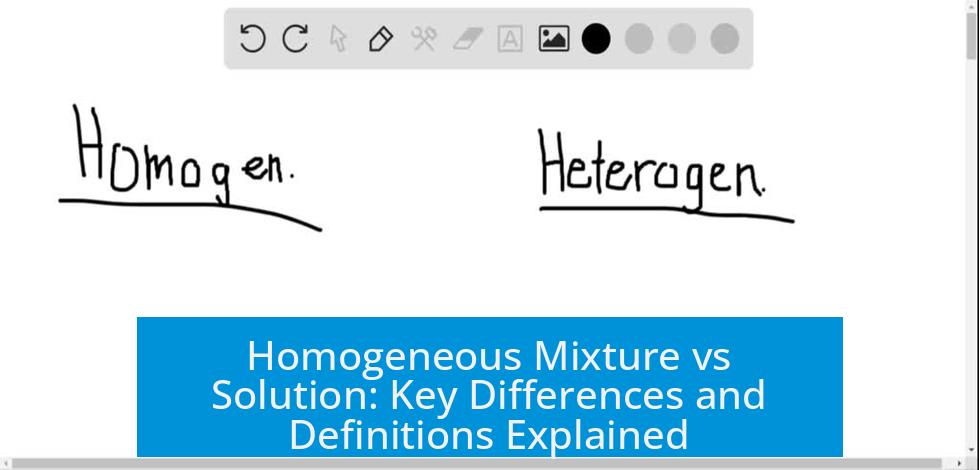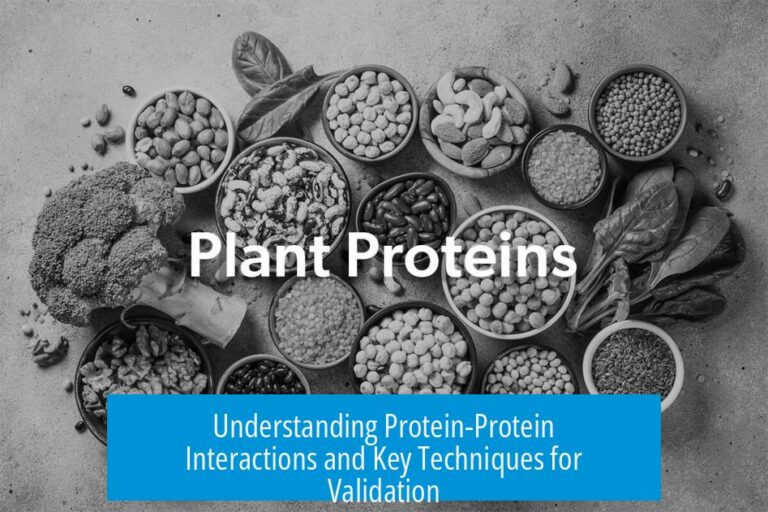Homogeneous Mixture vs Solution: Understanding the Difference

All solutions are homogeneous mixtures, but not all homogeneous mixtures are solutions. This distinction is crucial in chemistry. A solution is a specific type of homogeneous mixture with uniform composition and properties throughout. However, homogeneous mixtures encompass a broader range of substances beyond solutions.
Definitions and Relationships
- Solution: A homogeneous mixture where one substance (solute) dissolves uniformly in another (solvent).
- Homogeneous Mixture: Any mixture with uniform composition and phase, appearing consistent throughout.
Every solution fits the definition of a homogeneous mixture. But not all homogeneous mixtures qualify as solutions since they may not involve a solute-solvent relationship.
Types of Homogeneous Mixtures Beyond Solutions
Homogeneous mixtures include various forms such as:
- Emulsions: Fine dispersions of one liquid in another, like milk.
- Suspensions: Evenly distributed solid particles within a medium at a scale that appears uniform.
- Solid mixtures: Mixed powders or alloys that maintain uniformity.
Scope and Context of Homogeneous Mixtures
The term “homogeneous mixture” is context-dependent and not limited to liquids. Industries, such as pharmaceuticals, rely on homogeneity testing to ensure multiple batches or containers exhibit identical composition and quality.
This emphasizes that homogeneity refers to the distribution uniformity of components, regardless of the physical state. Homogeneous mixtures can be solid, liquid, or gas phases uniformly blended.
Terminology Clarifications
Sometimes, describing mixtures as “homogeneously mixed” better reflects certain scenarios. This phrase highlights the process or extent of uniform mixing rather than just the final state. It can be more precise in manufacturing or quality control contexts.
Educational Simplification
In high school chemistry, the terms “solution” and “homogeneous mixture” are often used interchangeably. This simplification helps students grasp basic concepts despite the technical distinctions.
Key Takeaways
- All solutions are homogeneous mixtures with uniform solute distribution.
- Homogeneous mixtures include other forms like emulsions and uniformly mixed solids.
- Homogeneity applies to all states of matter, not just liquids.
- “Homogeneously mixed” can provide clearer communication in some technical contexts.
- High school chemistry often treats solutions and homogeneous mixtures as synonyms for learning ease.





Leave a Comment